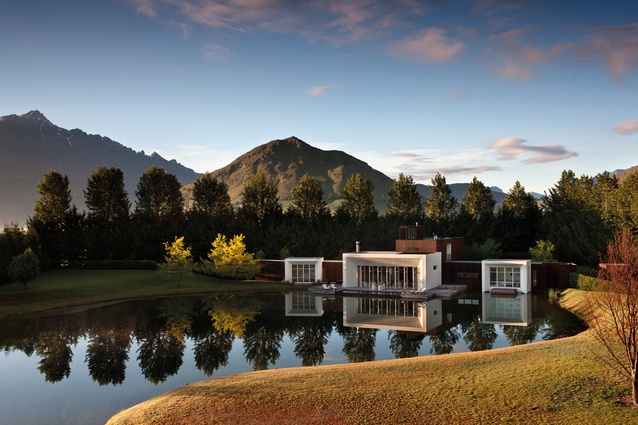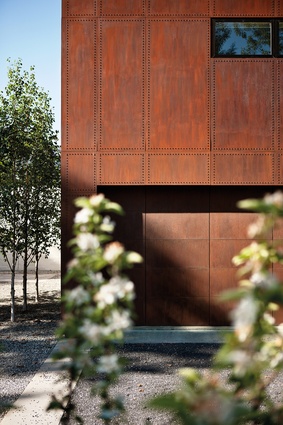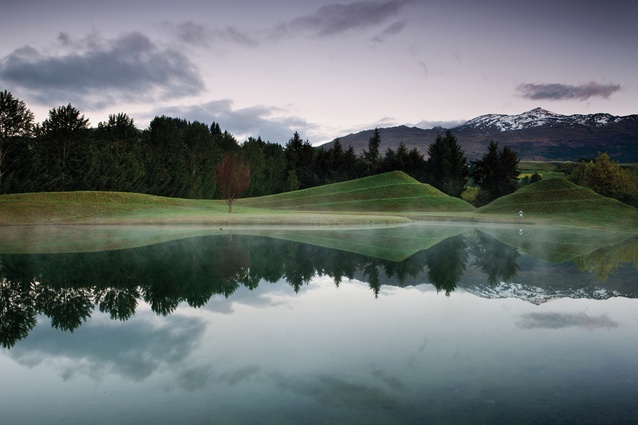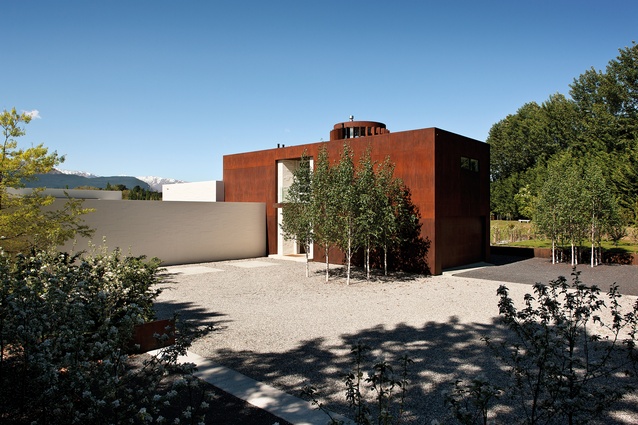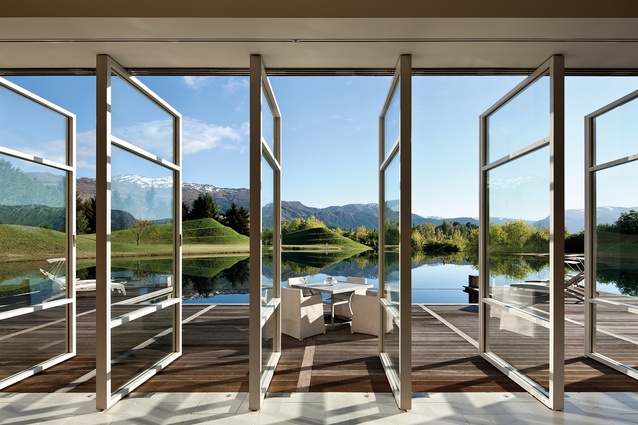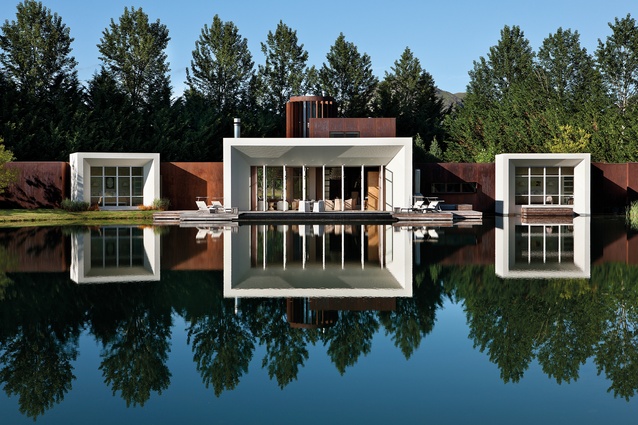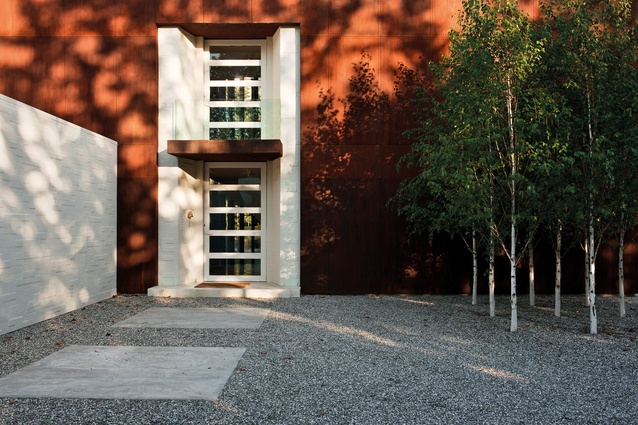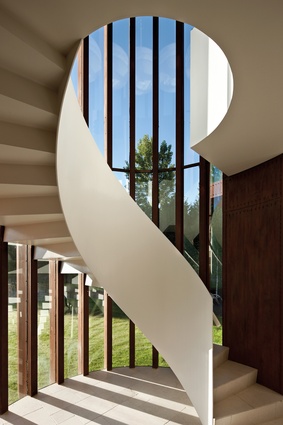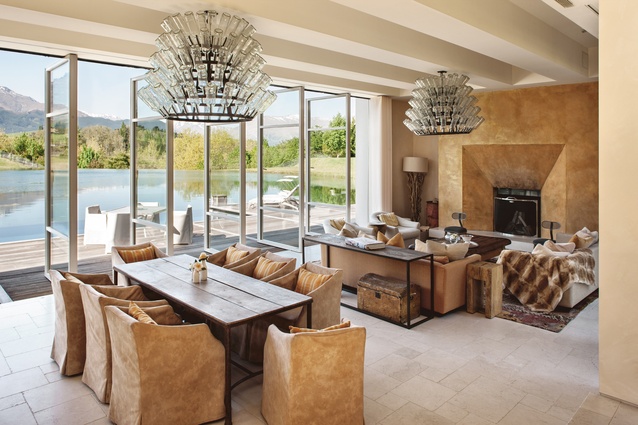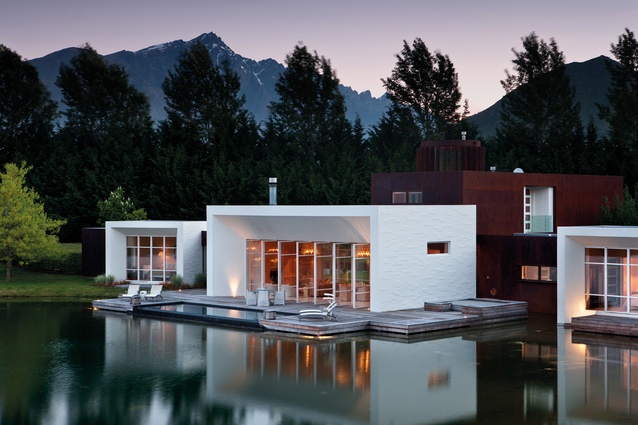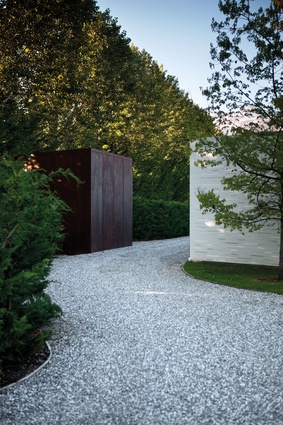Swan Lake
Suzanne Turley, New Zealand’s doyenne of landscape design, is an authority of setting. Through this excerpt from her new book – Suzanne Turley: Private Gardens of Aotearoa, edited by Urbis’ creative director, Thomas Cannings – we step into one of her master strokes.
According to Chinese-born modernist I.M. Pei, architecture is the mirror of life. If that aphorism is true, this dwelling in three parts is a physical expression of that thinking.
A great gully carved by an ancient ice flow bisected this Queenstown property – a glacial remnant that left the sheltered part of the land facing the rugged peaks and overlooking an unlovely depression. When architect Andrew Patterson and his clients reimagined it as a tarn filled with water, the ugly duckling turned swan. A white swan became the conceptual idea for the home, broken into a ‘body’ and two ‘wings’, with weathered-steel elements representative of an orange beak. It’s a breathtaking double act. A trio of deep rectangular portals is backed by a stand of mature Leyland cypresses, with the spectacle reflected in the water. It’s an inspired solution worth keeping as a surprise.
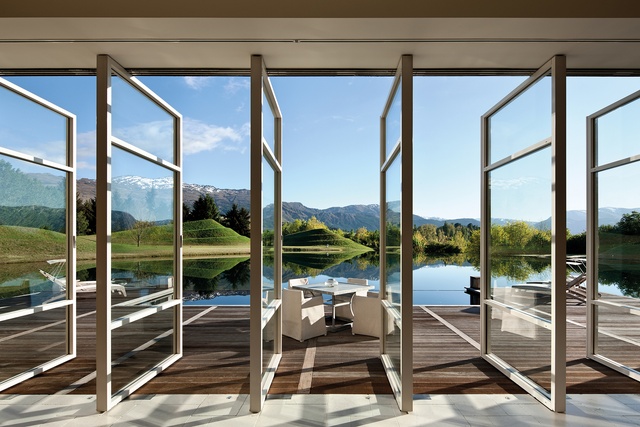
The driveway makes its way from the opposite end of the elongated section, curling past a tall copse of conifers. Shaped by the wind, these ‘dancing ladies’ with arms lifted to the Otago skies screen the house from view. To continue the sense of mystery, the drive veers off to the very boundary, behind land re-sculpted into ambitious berms. Moving the earth into artificial contours that echo a relationship with nature is an idea that had its genesis with American landscape architect and artist Charles Jencks.
In homage to the geological context, the three terraces that allow only glimpses of the lake house on approach are a miniature representation of the distant mountains.
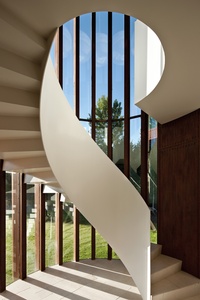
The journey ends in the crunch of gravel. The pale chip sparkles against the metal exterior and a wall that defines the edge of the entry court ensures that the enigmatic vista is not yet revealed.
Two groups of silver birch, gathered in a gridline formation, are simple, vertical elements within the courtyard. In winter, they become snow-draped figures – a choral party in white – and, in summer, their leaves throw a shadowy dance onto the rust-toned cladding.
As is fitting for a holiday retreat, this is an easy-care, fundamental landscape, not a garden. Grandiose gestures are star players and carefully rehearsed deciduous trees, including pin oaks and chestnut trees that flank the home, the ever-changing backdrop. The living room offers front-row seats to a powerful performance. But clamber to the top of one of those sculptured terraces to view the house in replica float above the water and it is immediately clear – the magic of design is indeed a mirror.
Excerpt from the book Suzanne Turley: Private Gardens of Aotearoa. Available online at privategardensofaotearoa.com.
This article first appeared in Urbis magazine.


